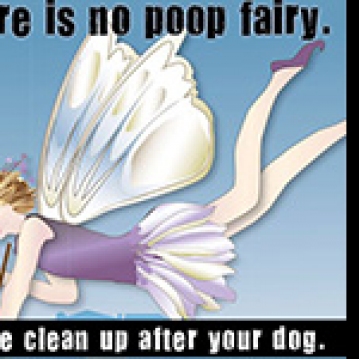
Remember Jerry Seinfeld’s bit about “When aliens look on Earth and see us picking up after dogs, they will know who is really in charge!” Sharing our lives, homes, and hearts with canine companions can be a lot like having a child. You quickly learn about your capacity for patience, love and understanding, along with your ability to deal with noise, barf, illness and daily “doodies”.
How can we, as responsible dog owners ecologically address this dilemma?
Reduce your dog’s waste by feeding a good quality food. Read labels. Avoid* anything with corn, wheat, soy or by-products. Better quality holistic fare does not contain cheap fillers. Your dog will use more of the concentrated nutrition, eat less quantity, eliminate less, and bonus - it should smell less. *Exception: if your dog is on a special diet, feed as directed by your vet.
Pick up goes for everyone - including those, who think just because they have a small dog they are exempt. The rain is not going to wash it away. Anyone can step or fall in it, track it home, spreading the aroma and more.
Go to any dog event or dog park. Count the number of dogs and multiply by 1.3. This is will give you the number of bags used within an hour or two. Most people tie bags with a knot, so now living organisms (like flies) can not get to it, to break it down. The bag can take years to disintegrate. All those bags add up to an ecologically unfriendly equation.
Manufactured petroleum-based dog waste bags are costly and carry the same environmental consequences as shopping bags. The majority of these bags are made of polyethylene (petroleum and natural gas derivative). They release dangerous amounts of airborne pollutants, and consume a great deal of energy during manufacturing. Bad choices.
Poly-bags can take as long as 1,000 years to fully decompose. And as they do, they are affected by solar and environmental factors, breaking down into tiny, toxic-laden pieces. Land and marine creatures along with birds unwittingly digest these toxic bits, which can lead to their deaths.
Eco-friendlier dog waste bags are made from starch, and agricultural plant-based versions are up to 100% recycled postindustrial low density thermoplastic.
Compared to conventional plastic, this is a better choice. However, in typical landfill conditions (lack of oxygen and/or anaerobic microorganisms to aid natural degradation) even eco-waste bags won’t easily decompose. Compostable or biodegradable dog waste bags would have to be exposed to a steady 140 degrees. So maybe don’t knot the bag, and allow those insects and organisms to do their jobs?
Back when I grew up, we hosed down our dog’s deposits a few times a week. This isn’t the best use of precious water.
There’s the burial method. Great, on your own property. Otherwise you’re carrying around a soiled little shovel, hoping the ground will be soft enough to dig a hole for the deposit, and that your neighbor doesn’t mind!
It’s a messy situation, but as responsible dog lovers, we must be thoughtful and considerate of others, along with the Earth. It was no easy task, but I have trained my spouse to use bio-bags for multiple deposits, which reduces the footprint. And by chance, if aliens are watching, let’s make more ecologically friendly choices for those “who are really in charge”!
Tina Valant-Siebelts is a confirmed dog-o-holic, mom to many rescued pets, who volunteers with numerous organizations. To "fill all those dog bowls," Tina is an award-winning photographer, writer & event coordinator. www.HaveDog.com
